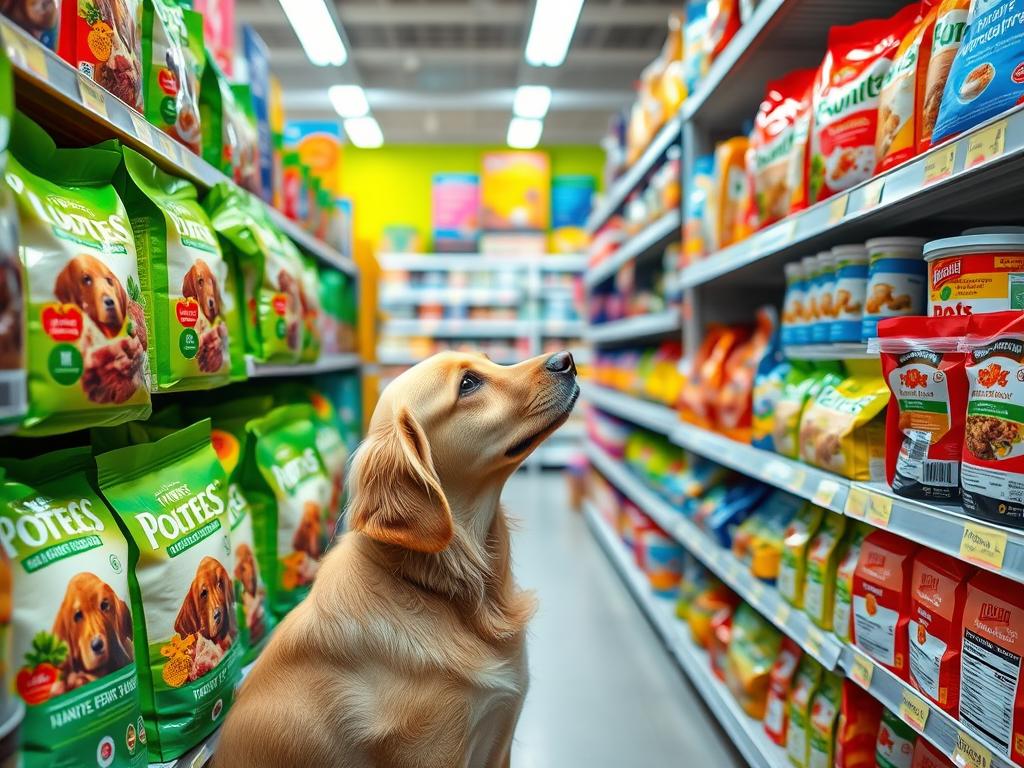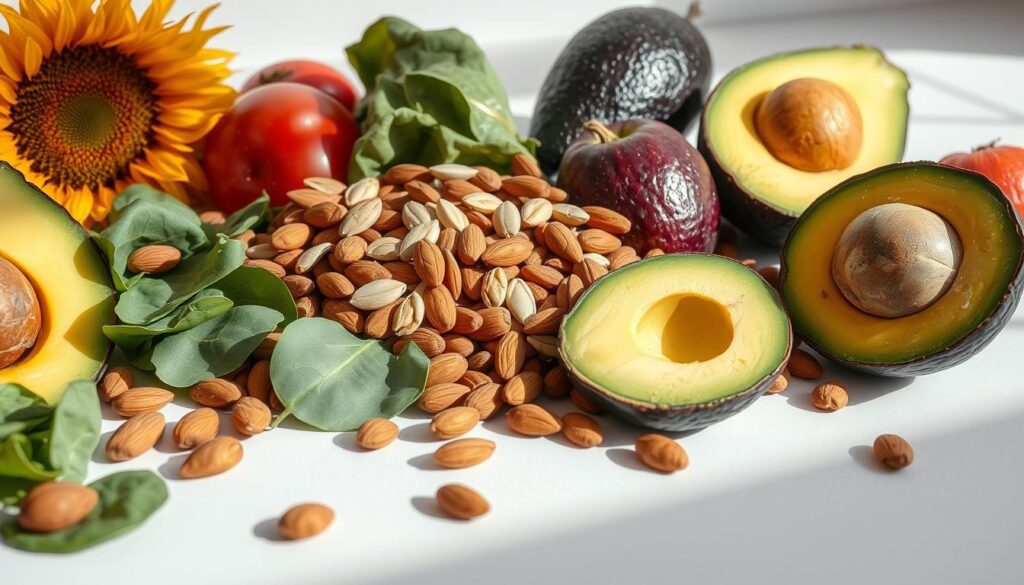Did you know that dogs are recommended to be fed at least twice a day by veterinarians? This guideline can vary significantly depending on your dog’s size, breed, and activity level. With the soaring number of pet owners—over 67% of U.S. households owning a pet—understanding how many meals your dog needs daily has never been more critical. Whether you’re experiencing dog feeding frequency challenges or simply want to align with proper pet feeding recommendations, this guide will provide you with the expert insights necessary to help your furry friend thrive.
Key Takeaways
- Most dogs generally require two meals a day.
- Toy-breed puppies need 4 to 6 meals per day for their first three months.
- Large-breed puppies typically need 3 to 4 meals a day.
- Understanding your dog’s metabolism is essential; energy levels can vary by 30%.
- Free-feeding is generally not recommended for dogs.
- Feeding frequency can influence your dog’s overall health and behavior.
Understanding Your Dog’s Nutritional Needs
Recognizing the unique nutritional requirements of your dog is essential for maintaining their health and happiness. Multiple factors influence how often your dog should eat, including their size, breed, age, and activity level. Understanding these elements helps in crafting an effective dog feeding schedule that aligns with canine nutrition guidelines.
Factors Influencing Meal Frequency
Meal frequency varies based on individual needs. Generally, adult dogs are advised to have meals once or twice a day. For larger breeds, feeding them at least twice daily helps minimize the risk of overeating and bloating, ensuring they stay healthy. In addition, puppies require more frequent meals due to their higher appetite, making it vital to adjust feeding schedules accordingly.
Size and Breed Considerations
The size and breed of your dog significantly impact their dietary requirements. Larger dogs typically need more food than smaller breeds. Consulting with your veterinarian for advice on the best food portions tailored to breed and size can promote a healthier weight and reduce the chances of health problems like obesity and diabetes. Keep in mind that treats and table scraps should not exceed 10% of their daily calorie intake to maintain balance.
Age and Activity Level
Age and activity level are key determinants of dietary needs. Puppies, for instance, generally have a greater appetite than adult dogs, necessitating a separate feeding approach. For transitioning a puppy to regular food, start with a mix of 75% puppy food and 25% adult dog food to ease the process. Ensuring that your dog receives adequate hydration is equally important, as water constitutes more than half of an adult dog’s body weight.
By understanding these factors and following veterinary advice on dog meals, you can better cater to your dog’s nutritional needs while fostering a strong companionship. To explore more about the significance of choosing the right companion dog based on lifestyle and care needs, read this insightful article.
General Guidelines for Feeding Dogs
Establishing the optimal dog feeding routine varies significantly across different life stages. Understanding the unique dietary needs of puppies, adult dogs, and seniors ensures that each dog receives the appropriate nutrition for their specific requirements. Implementing the best feeding practices for dogs contributes to their overall health and well-being.
Puppies vs. Adult Dogs
Puppies require special attention regarding their meal schedule. Young dogs typically need 3 to 4 meals per day, supporting their rapid growth and high energy levels. The best feeding practices for dogs during this stage emphasize a higher caloric intake, approximately 50 calories per pound of body weight. Dogs in active lifestyles demand even more calories to sustain their energy. As dogs reach their adult stage, usually between 12 to 18 months, transitioning to a two-meal-a-day routine is recommended. Portion sizes may need adjusting based on their activity levels and weight.
Senior Dogs’ Dietary Needs
As dogs age, their dietary requirements change significantly. Senior dogs often require fewer calories due to decreased physical activity and metabolic changes. It’s essential to monitor their weight and adjust their meal size accordingly, typically around 1 to 2 meals daily. For smaller breeds, nutritional needs differ; they might still require calorie-dense food in smaller portions to maintain their energy levels. A dog meal schedule tailored for senior dogs should focus on easily digestible ingredients to support optimal health. Pregnant or lactating dogs may also need additional calories to support their growth and energy needs during this critical period.
| Dog Type | Recommended Meals/Day | Calories Needed | Portion Size |
|---|---|---|---|
| Puppies | 3-4 | 50 calories/lb | Adjust based on activity |
| Adult Dogs | 2 | 30 calories/lb | Adjusted per size (see below) |
| Senior Dogs | 1-2 | Varies per health | Lower portion, monitor weight |

Choosing the Right Dog Food
Selecting the right dog food is essential for ensuring your furry friend receives a balanced diet tailored to their unique needs. Understanding different types of dog food and the important ingredients to look for can provide clarity in making these decisions. This expert advice on dog meals helps guide you through the options available to maintain your dog’s health.
Types of Dog Food Available
Various types of dog food cater to the distinct requirements of our pets. These include:
- Dry kibble: Convenient and economical, dry food often meets complete nutritional needs.
- Canned food: Moist and palatable, canned options can be higher in protein and fat.
- Premium or specialty diets: These may address specific health concerns or shed light on \2430 sensitive stomachs. Brands such as Hill’s and Purina offer tailored formulas that comply with AFFCO standards ensuring nutritional adequacy.
- Raw diets: Advocates believe raw food mimics a dog’s ancestral diet, but care is needed to avoid nutritional imbalances.
Ingredients to Look For
Paying attention to ingredients is vital. Analyzing labels can help identify the right fit for your dog.
| Ingredients | Importance |
|---|---|
| High-quality protein | Essential for muscle formation, must contain essential amino acids. |
| Healthy fats | Provide energy, aid in vitamin absorption, and promote healthy skin and coat. |
| Whole grains or legumes | Source of carbohydrates, providing a secondary energy source. |
| Vitamins and minerals | Support overall health, immune function, and bone development. |
While protein is crucial, understanding the minimum requirements set forth by AFFCO can guide you closer to optimal nutrition. Most dog food should have at least 18% protein for growth and 8% for maintenance. Besides, staying informed about special diet recommendations is critical for dogs with specific health conditions. For more insights into pet feeding recommendations, consider visiting this resource and exploring food choices for sensitive stomachs here.

Signs Your Dog Is Hungry or Full
Understanding your dog’s feeding behavior plays a vital role in managing their diet effectively. Observing how your pet interacts with their food can provide valuable insights into their hunger and satiety cues. Here are some key behavioral cues of hunger.
Behavioral Cues of Hunger
Common signs that indicate your dog may be hungry include:
- Vocalization: Dogs may whine or bark when they want food.
- Food Searching: Pacing around the kitchen or sniffing their food area.
- Leaning and Staring: Getting closer to where food is kept and staring at you.
- Pawing or Nosing: Trying to get your attention by pawing at you or their food bowl.
These behavioral signals emphasize the importance of following proper dog feeding tips.
Recognizing Signs of Overeating
On the flip side, it is crucial to be alert to signs that your dog may be overeating. Some signs to watch for include:
- Vomiting: Frequent or sudden vomiting can signal overconsumption.
- Excessive Thirst: Drinking more water than usual can be a red flag.
- Lethargy: A lack of energy can indicate discomfort from overeating.
- Visible Weight Gain: Regularly track your dog’s weight to catch gradual increases.
Veterinary advice on dog meals often emphasizes the importance of portion control to prevent obesity. Keeping treats below 10% of their diet and adjusting meal sizes based on activity level can help maintain a healthy weight.

Adjusting Meal Times for Your Dog
Establishing a dog meal schedule plays a vital role in your pet’s overall well-being. Knowing when to feed your dog helps regulate digestion, maintains their energy levels, and fosters good habits. The best times to feed your dog depend on their age, size, and specific nutritional needs.
Best Times of Day to Feed Your Dog
For optimal dog feeding routines, adult dogs typically benefit from being fed twice daily, with meals spaced around 12 hours apart. This not only stabilizes their energy but helps prevent issues like bloating. Puppies, particularly those under five months, require a more frequent feeding schedule. Many experts suggest:
- 4 feedings a day: for puppies 6-12 weeks old.
- 3 meals a day: for puppies aged 3-6 months.
- 2 meals daily: for puppies from 6-12 months and beyond.
When crafting your feeding times, aim to maintain a consistent routine. This predictability not only comforts your dog but also supports digestion and nutrient absorption.
Establishing a Consistent Routine
Creating a predictable feeding schedule fosters security in your dog’s life. Regular mealtimes help them anticipate food, contributing to overall happiness. For dogs that prefer grazing all day, establishing a set mealtime is critical. Measuring portions ensures your dog doesn’t overeat while allowing a more structured dog meal schedule. Using food toys during mealtime can enhance mental engagement and physical activity, making mealtimes enjoyable.
Dogs thrive on routine. Consistent schedules not only promote proper digestion but also support weight management and energy levels. Whether it’s breakfast, lunch, or dinner, sticking to a routine is key in helping your furry friend adapt to changes within their environment, which could include visitors or new family members. Gradually transitioning to new foods becomes seamless when your dog is accustomed to a structured feeding approach.
Homemade Dog Meals: What to Consider
Considering homemade dog meals offers pet owners an opportunity to shape their dog’s dietary needs. It is essential to approach meal preparation with care, ensuring that the food is not only tasty but also packed with the nutrients necessary for a healthy and vibrant life.
Essential Nutrients for Home-Cooked Meals
When preparing homemade dog meals, including the right nutrients is crucial. Vital components to focus on include:
- Omega fatty acids for healthy skin and coat
- High-quality proteins to support muscle development
- Antioxidants to enhance overall health and immune function
Many recipes often lack clear instructions, making it easier for pet owners to inadvertently create nutritionally inadequate meals, which can be harmful in the long run. Veterinary guidance is essential to ensure the proportions of these nutrients are balanced for each dog. A gradual transition to new foods over five to seven days is advisable to prevent gastrointestinal disturbances.
Sample Recipes for Balanced Diet
Incorporating homemade dog meals into your pet’s routine requires some planning. Here are a couple of simple recipes that provide a balanced nutritional profile:
| Recipe | Ingredients | Benefits |
|---|---|---|
| Chicken & Rice | 1 cup cooked chicken, 1 cup brown rice, 1/2 cup peas | Protein-rich, easy to digest |
| Beef & Vegetables | 1 cup ground beef, 1/2 cup carrots, 1/2 cup spinach | High in protein, loaded with vitamins |
Using a tool like ChefPaw by Innovet Pet Products can simplify the preparation of homemade meals while ensuring they are nutritionally dense. Providing the right ingredients helps achieve the best feeding practices for dogs, allowing owners to monitor their dog’s health effectively.
When to Consult a Veterinarian
Understanding your dog’s dietary requirements is crucial, but it’s equally important to monitor their nutritional health. Regular veterinary consultations can provide essential veterinary advice on dog meals, ensuring that your pet is receiving the proper nutrients tailored to their needs. As dogs age, their dietary issues can evolve, and identifying these changes early on is key to maintaining their health.
Identifying Dietary Issues
It’s vital to be attentive to any changes in your dog’s appetite or behavior, as these can signify underlying dietary issues. Issues such as excessive weight gain, lethargy, or digestive disturbances may indicate that your dog’s current diet is not meeting their specific needs. The Association of American Feed Control Officials (AAFCO) guidelines state that the nutrient composition of dog food should adhere to specific benchmarks, making it essential to consult with your veterinarian to ensure those requirements are met.
Importance of Regular Check-Ups
Regular check-ups can help detect dietary deficiencies or excesses before they lead to serious health problems. Your veterinarian can recommend adjustments based on age, weight, and lifestyle changes that may affect your dog’s nutritional needs. Staying proactive about your dog’s health not only helps identify dietary issues but also contributes to a better quality of life, giving you peace of mind knowing your pet is thriving.











